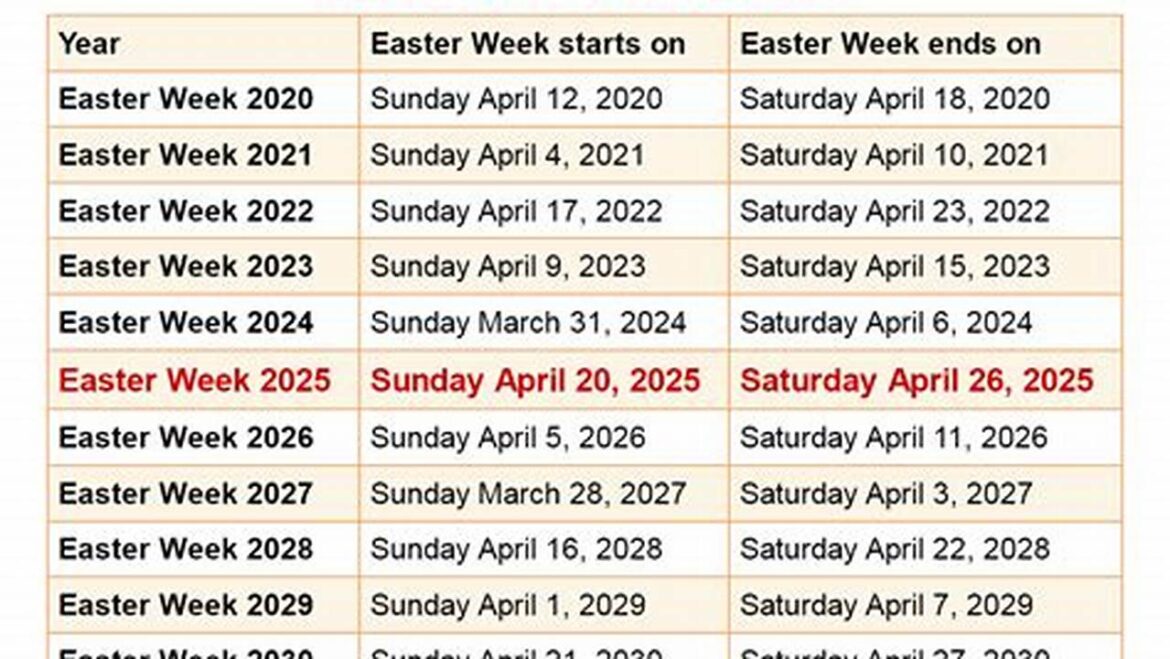The celebration of Easter in the United States is deeply rooted in Christian theology and tradition. This highly anticipated event marks the resurrection of Jesus Christ, an occurrence that embodies the cornerstone of Christian faith. For many believers, Easter serves not only as a commemoration of Christ’s victory over death but also as an opportunity for renewal, reflection, and hope.
Easter Sunday in the U.S. does not adhere to a fixed date; instead, it is determined by a complex calculation known as the Paschal Full Moon. This means that Easter falls on the first Sunday following the first full moon after the vernal equinox. Consequently, Easter can be celebrated as early as March 22 and as late as April 25, leading to a variability that keeps the date of this sacred observance uncertain each year. For instance, in 2025, Easter Sunday will be celebrated on April 20.
In preparation for Easter, the preceding season, Lent, begins on Ash Wednesday, which occurs 46 days before Easter Sunday. Lent is a period of penitence, fasting, and spiritual discipline, reflecting the 40 days that Jesus spent fasting in the wilderness. During this solemn time, many Christians engage in acts of self-denial, prayer, and almsgiving, culminating in the joyous celebration of Easter.
The Easter celebration extends beyond simply attending church services. Various traditions and customs have emerged, reflecting the cultural diversity found within Christianity in America. These observances can vary significantly from one community to another and often meld cultural practices with religious beliefs. In many households, the decorations and preparations begin weeks in advance. Colorful Easter eggs, symbolizing new life and resurrection, are prominently featured in these festive arrangements.
One of the most popular traditions is the Easter egg hunt. Children eagerly await this event, searching for hidden eggs filled with candy or small toys. This activity, while seemingly secular, metaphorically corresponds with the Easter message of resurrection and new beginnings. The vibrant colors of the eggs often represent the beauty of creation and the joy of life that comes through Christ.
Religious significance accompanies many customs. One notable practice is the Easter Vigil, held on the night before Easter Sunday. This service is rich in symbolism, incorporating scripture readings that trace the history of salvation. The lighting of the Paschal candle signifies the light of Christ entering the world, dispelling darkness and sin. The vibrant liturgy, accompanied by hymns and prayers, immerses the congregation in the transformative power of faith.
On Easter Sunday, many Christians attend church services, where the atmosphere is filled with joy and celebration. The liturgical colors traditionally shift to white and gold, signifying purity and joy. Worship often includes the singing of hymns such as “Christ the Lord Is Risen Today” and celebratory prayers that recognize the occasion’s significance. Congregational exclamations of “He is Risen!” and “He is Risen Indeed!” resonate through sanctuaries, creating a communal atmosphere of faith and enthusiasm.
Aside from the profound spiritual experience, Easter also has an element of communal celebration. Families often gather for a festive meal, symbolizing togetherness and gratitude for the blessings received. Traditional foods may vary depending on cultural backgrounds, but common items might include lamb, representing Christ as the Paschal Lamb, and a variety of springtime dishes that signify the emergence of new life. This occasion offers an opportunity for families to bond, share stories, and reinforce their connections with one another.
In addition to church services and family gatherings, many local communities engage in public celebrations. Parades, fairs, and community service initiatives provide avenues for individuals to connect with their neighbors while incorporating elements of their faith into aforementioned activities. Such communal observances foster a sense of belonging, expressing the notion that Easter is not merely an individual affair, but one that unites believers across different backgrounds and experiences.
Moreover, the themes inherent in the Easter observance resonate beyond the church doors and into societal reflections. The broader message of hope, renewal, and resurrection invites individuals to engage in thoughtful introspection about their lives. This contemplative aspect encourages one to consider how personal experiences of darkness can transition into moments of light, much akin to Christ’s resurrection.
As April 20, 2025, approaches, believers and communities prepare to embrace this vibrant season with open hearts and minds. Easter serves as a timely reminder of the joys of faith, restarting the cycle of reflection, renewal, and revitalization that spring promises. It encourages the faithful to transcend mere observance; rather, it inspires action rooted in the spirit of hope. The upcoming celebration of Easter provides innumerable opportunities for reflection, reverence, and joyful participation in a cherished tradition that binds together Christians across the nation.
Ultimately, the Easter observance in the United States serves as more than a mere holiday; it stands as a testament to the enduring power of faith and the promise of new beginnings. As the community celebrates with hearts full of joy and anticipation, the essence of Easter continues to resonate, bridging the sacred with the everyday in a dynamic expression of belief and unity.



